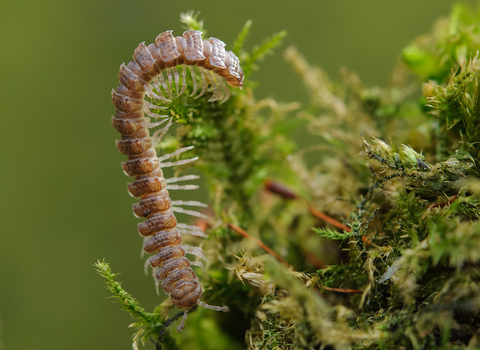
Flat-backed Millipede ©northeastwildlife.co.uk
Flat-backed millipede
Found in compost heaps and under stones in gardens, the flat-backed millipede is a common minibeast. It is an important recycler of nutrients, feeding on decaying matter.

Flat-backed Millipede ©northeastwildlife.co.uk